Abstract
1. It was proposed [Johnson (1974) J. Neurochem. 23, 785--789] that both inhibition of neurotoxic esterase of nervous tissue and subsequent 'aging' of the inhibited esterase are necessary events in the pathogenesis of organophosphate-induced delayed neuropathy: aging has now been demonstrated with a number of neurotoxic compounds. 2. Reactivation by KF was observed for hen brain neurotoxic esterase inhibited by 14 organophosphates and phosphonates, and time-dependent loss of reactivatibility (aging) occurred in every case. 3. For five other compounds no reactivation occurred and aging could not therefore be established, but independent evidence for two compounds suggests that aging was rapid. 4. Half-lives of aging of neurotoxic esterase inhibited by phosphates ranged from less than 1 min to 10 min, and for phosphonates the range was 3--600 min. 5. The relationship of these findings to the mechanism of toxicity and to the prospects of therapy are considered. 6. Aging occurred rapidly with aryloxy and linear alkoxy groups attached to phosphorus and slowly with a highly branched alkoxy substituent: these effects seem incompatible with an SN1 (dealkylation) mechanism.
Full text
PDF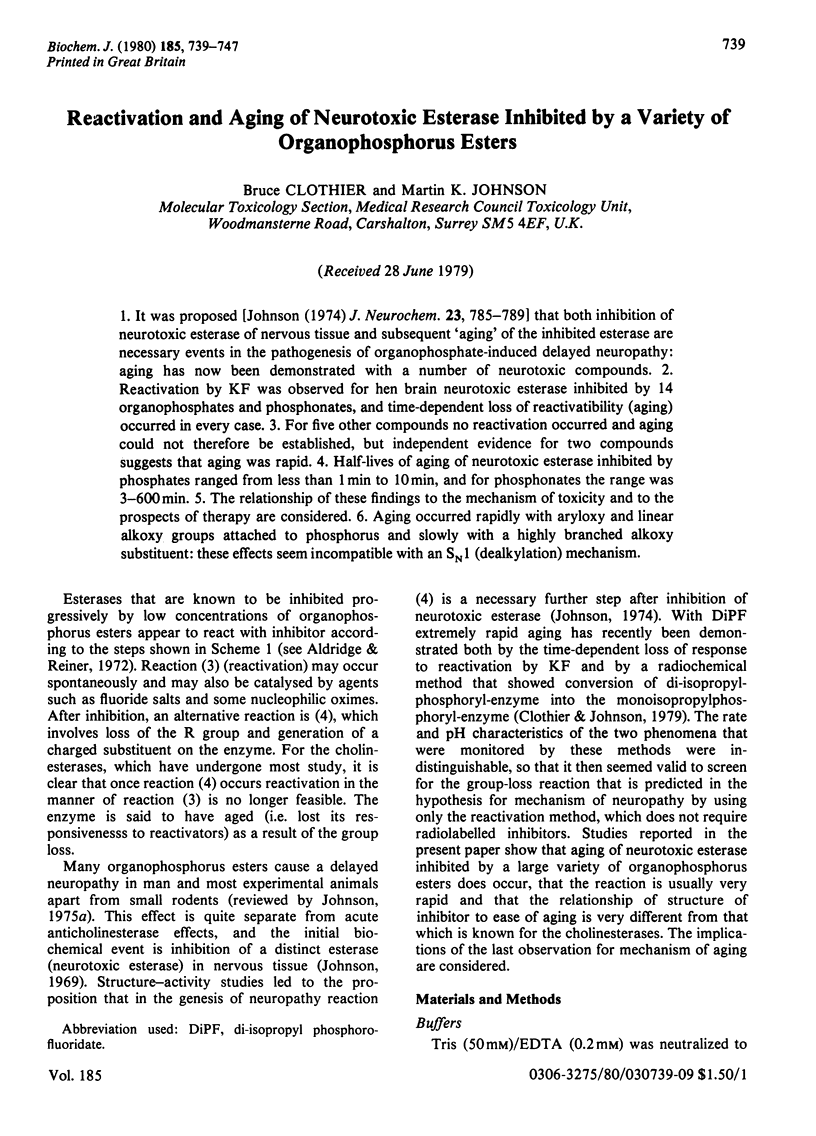
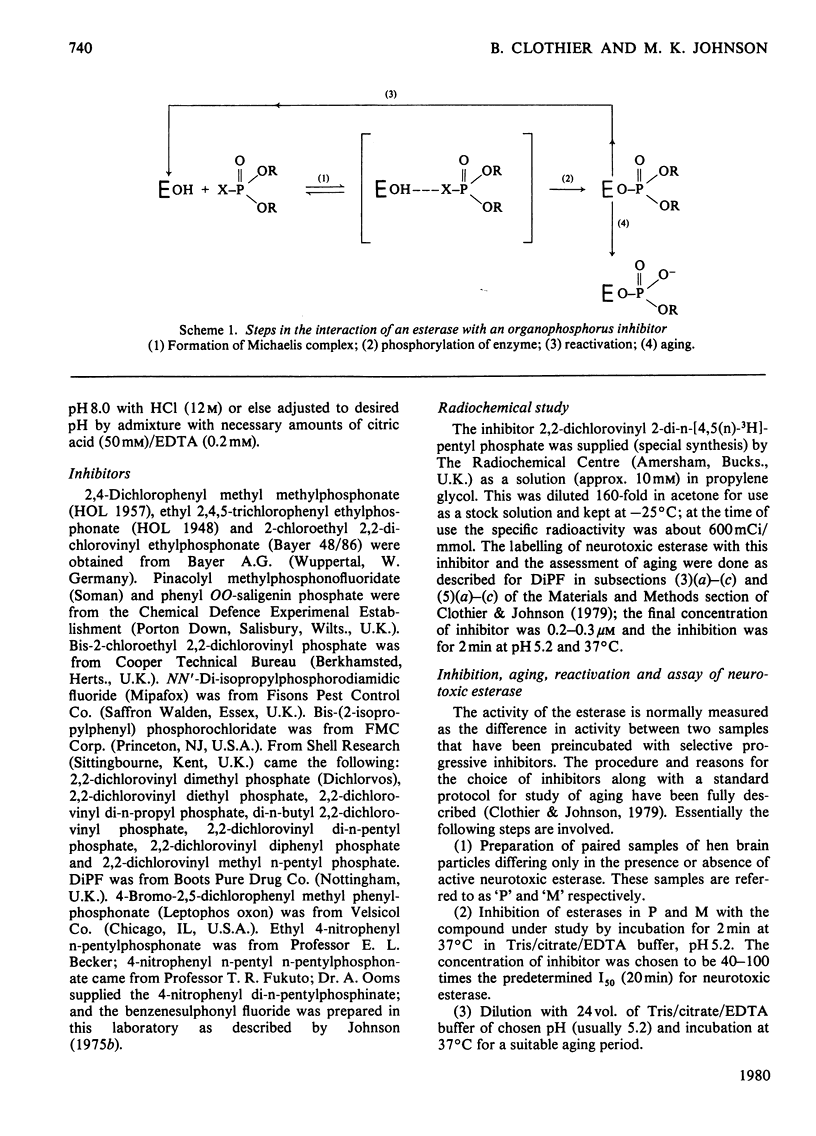
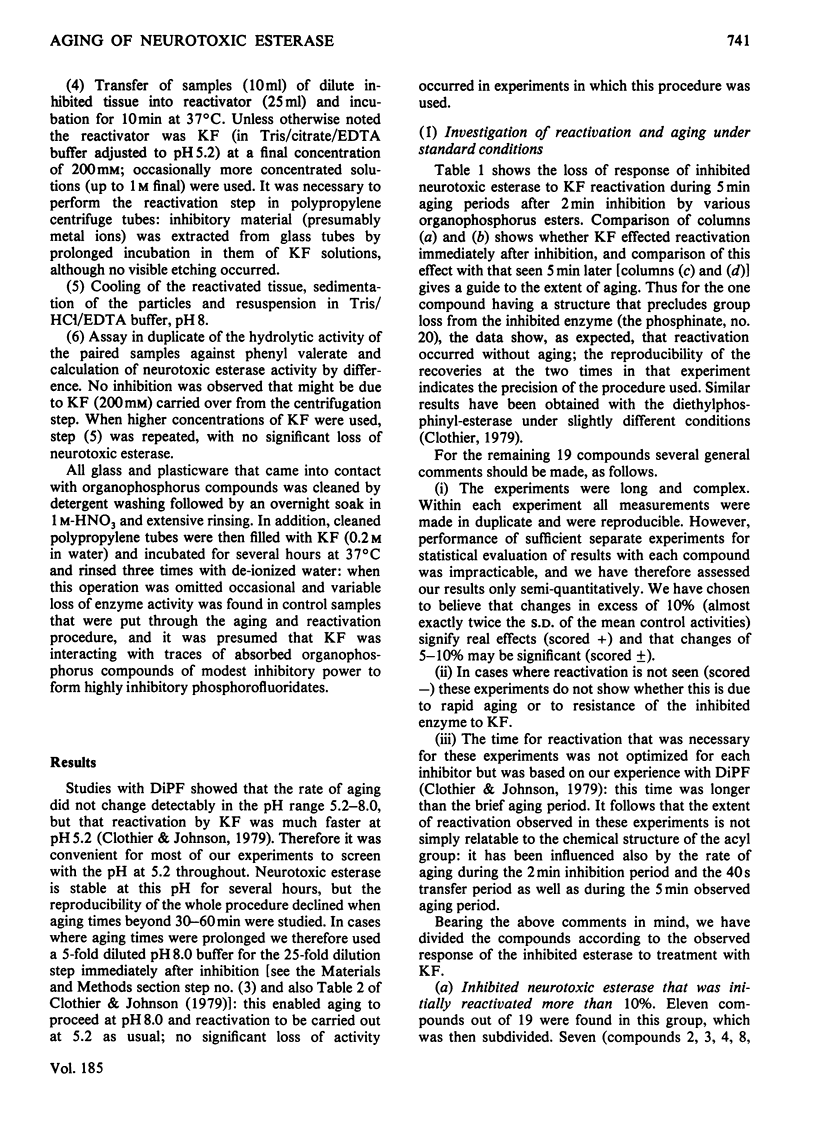
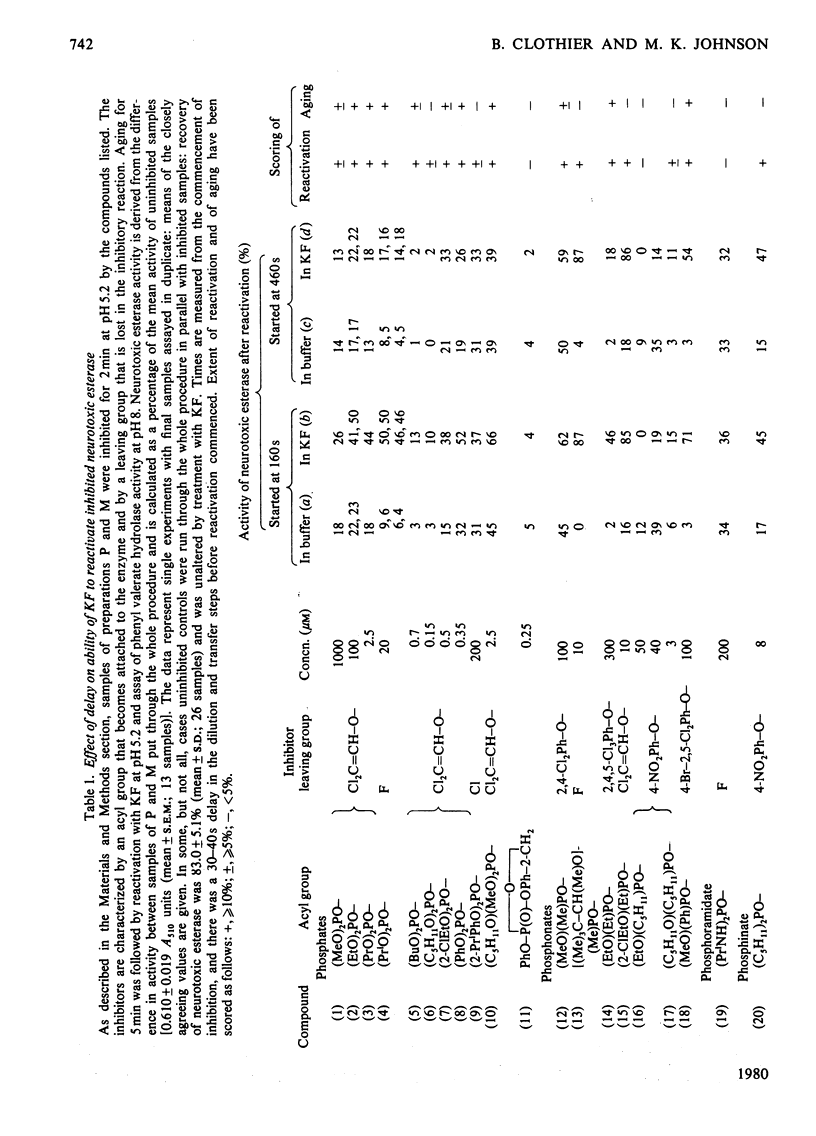
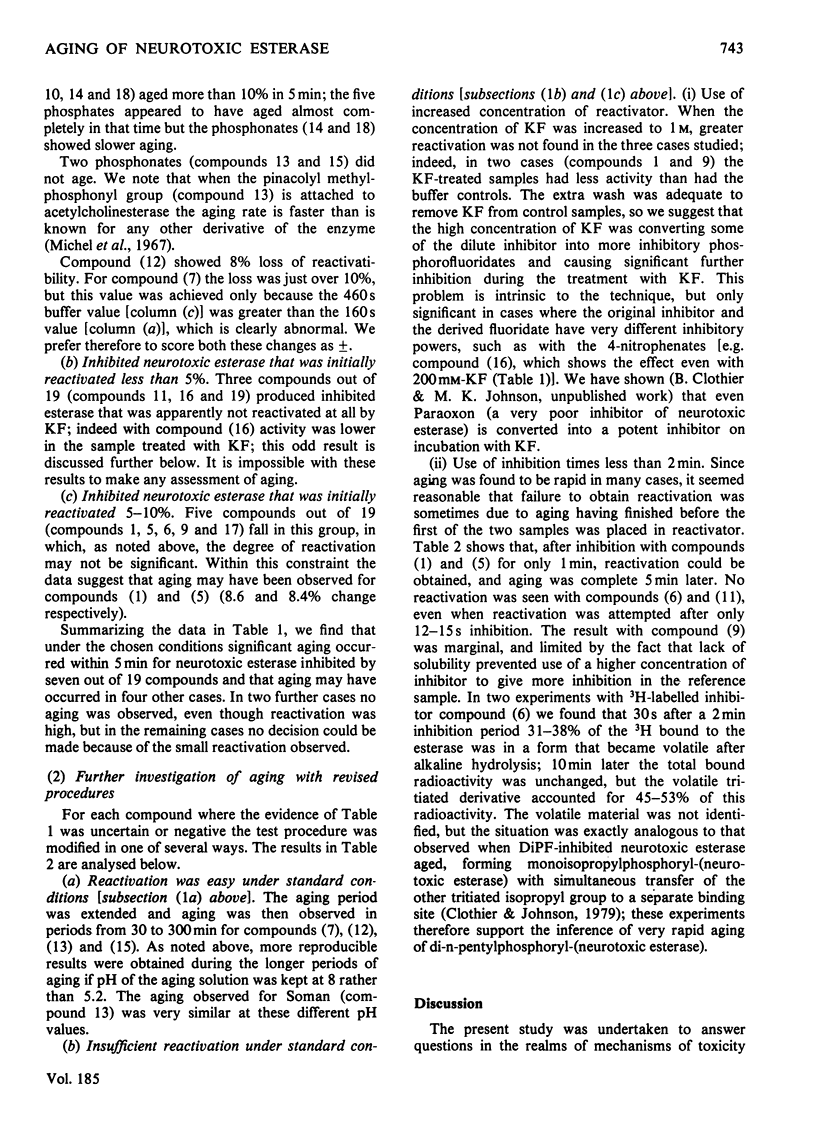
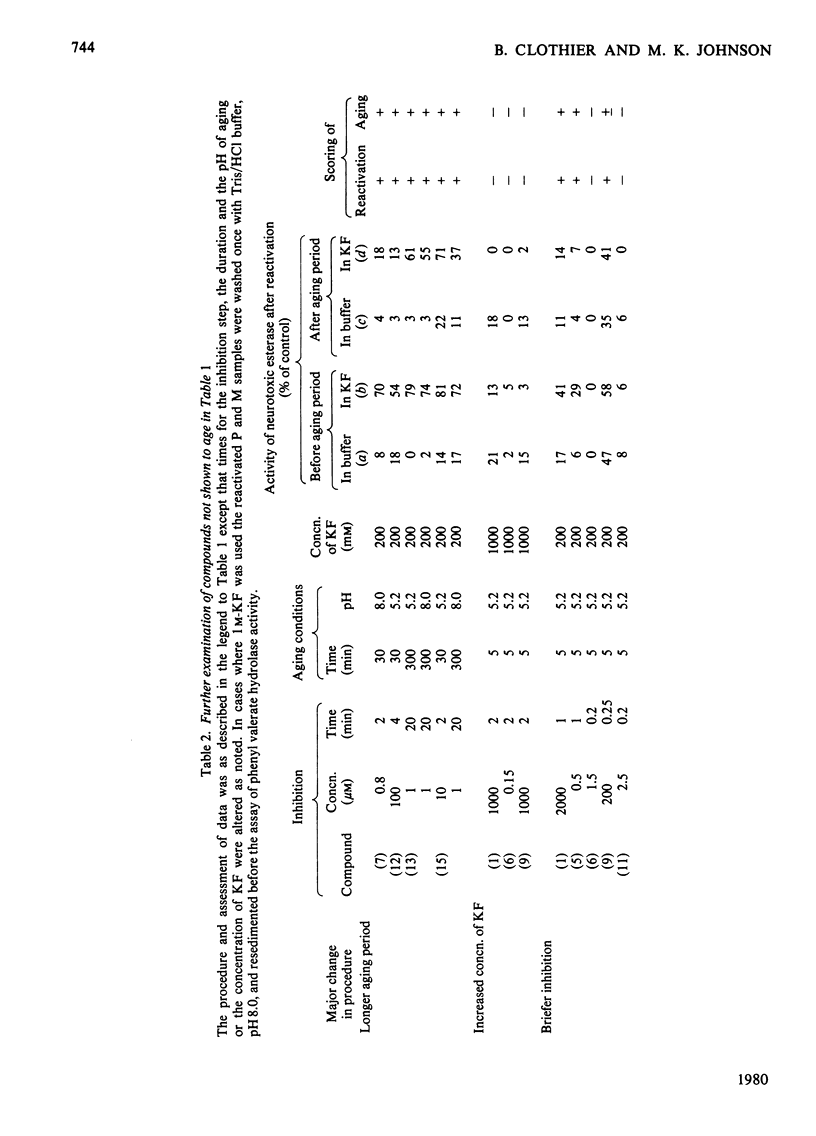
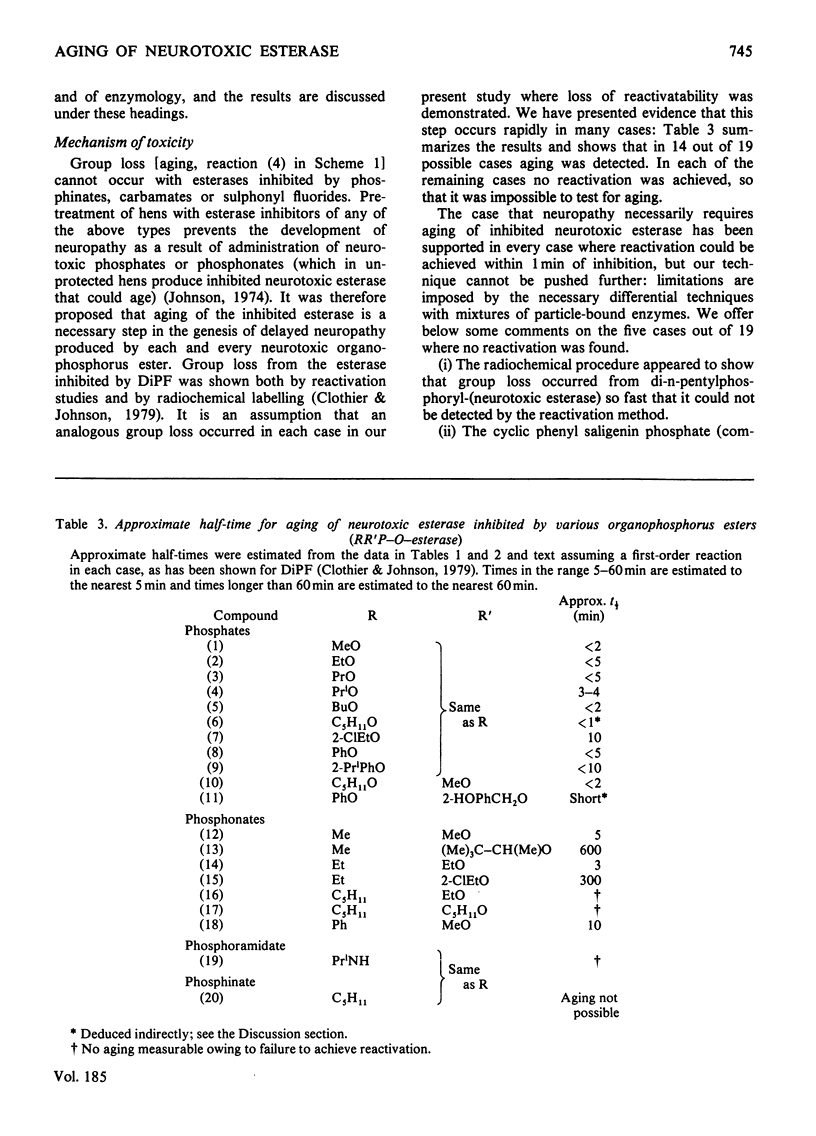
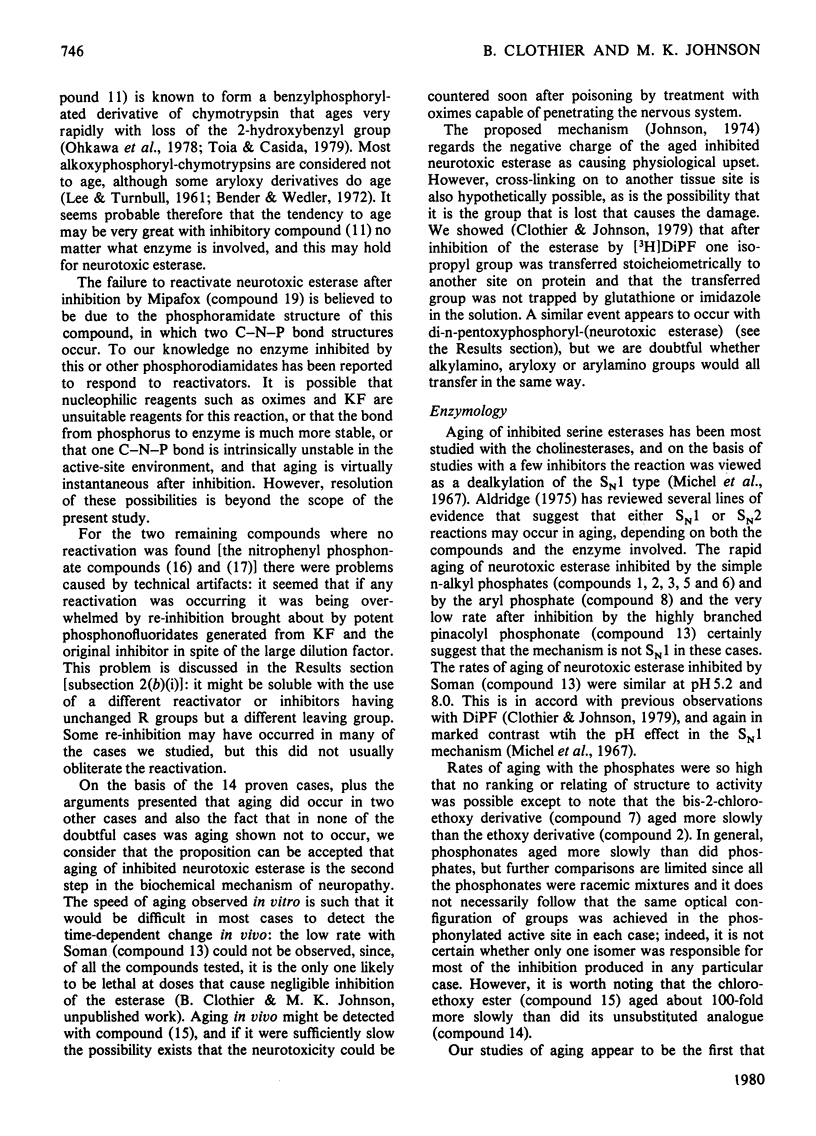
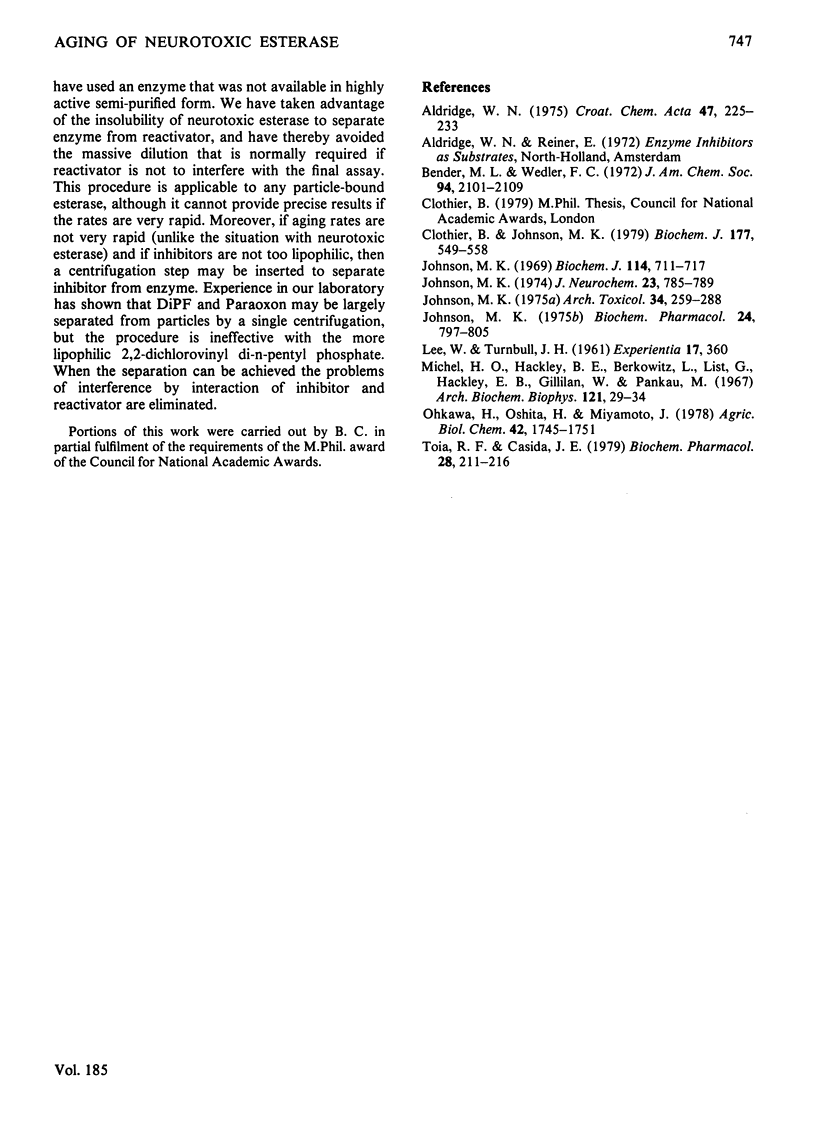
Selected References
These references are in PubMed. This may not be the complete list of references from this article.
- Bender M. L., Wedler F. C. Phosphate and carbonate ester "aging" reactions with -chymotrypsin. Kinetics and mechanism. J Am Chem Soc. 1972 Mar 22;94(6):2101–2109. doi: 10.1021/ja00761a050. [DOI] [PubMed] [Google Scholar]
- Clothier B., Johnson M. K. Rapid aging of neurotoxic esterase after inhibition by di-isopropyl phosphorofluoridate. Biochem J. 1979 Feb 1;177(2):549–558. doi: 10.1042/bj1770549. [DOI] [PMC free article] [PubMed] [Google Scholar]
- Johnson M. K. Organophosphorus esters causing delayed neurotoxic effects: mechanism of action and structure activity studies. Arch Toxicol. 1975 Dec 18;34(4):259–288. doi: 10.1007/BF00353848. [DOI] [PubMed] [Google Scholar]
- Johnson M. K. Structure-activity relationships for substrates and inhibitors of hen brain neurotoxic esterase. Biochem Pharmacol. 1975 Apr 1;24(7):797–805. doi: 10.1016/0006-2952(75)90123-9. [DOI] [PubMed] [Google Scholar]
- Johnson M. K. The delayed neurotoxic effect of some organophosphorus compounds. Identification of the phosphorylation site as an esterase. Biochem J. 1969 Oct;114(4):711–717. doi: 10.1042/bj1140711. [DOI] [PMC free article] [PubMed] [Google Scholar]
- Johnson M. K. The primary biochemical lesion leading to the delayed neurotoxic effects of some organophosphorus esters. J Neurochem. 1974 Oct;23(4):785–789. doi: 10.1111/j.1471-4159.1974.tb04404.x. [DOI] [PubMed] [Google Scholar]
- LEE W., TURNBULL J. H. An ageing effect in inhibited esterases: elimination of phenol from DPC1P-inhibited chymotrypsin and trypsin. Experientia. 1961 Aug 15;17:360–361. doi: 10.1007/BF02201763. [DOI] [PubMed] [Google Scholar]
- Michel H. O., Hackley B. E., Jr, Berkowitz L., List G., Hackley E. B., Gillilan W., Pankau M. Ageing and dealkylation of Soman (pinacolylmethylphosphonofluoridate)-inactivated eel cholinesterase. Arch Biochem Biophys. 1967 Jul;121(1):29–34. doi: 10.1016/0003-9861(67)90006-9. [DOI] [PubMed] [Google Scholar]
- Toia R. F., Casida J. E. Phosphorylation, "aging" and possible alkylation reactions of saligenin cyclic phosphorus esters with alpha-chymotrypsin. Biochem Pharmacol. 1979;28(2):211–216. doi: 10.1016/0006-2952(79)90506-9. [DOI] [PubMed] [Google Scholar]


